 |
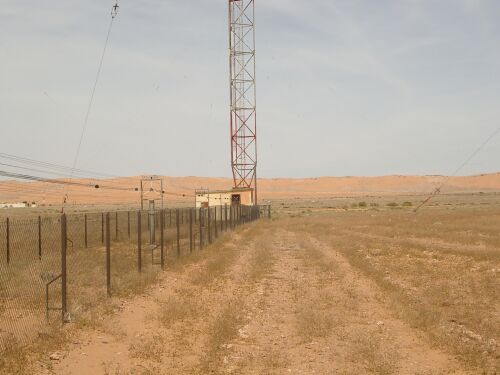 |
The central mast, which is fed,
and the feeder line.
|
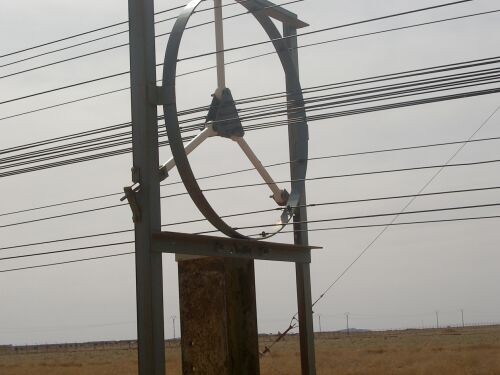 |
The characeristic impedance is 150 ohms.
|
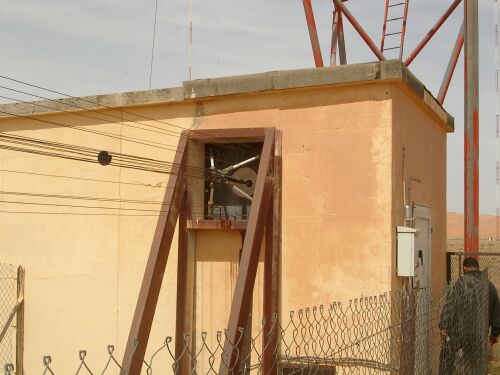 |
The antenna tuning hut with the feed through and the feeder line.
|
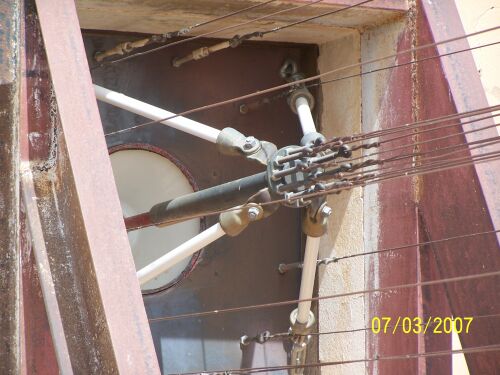 |
The feeder line at the antenna tuning hut with a feed through insulator.
|
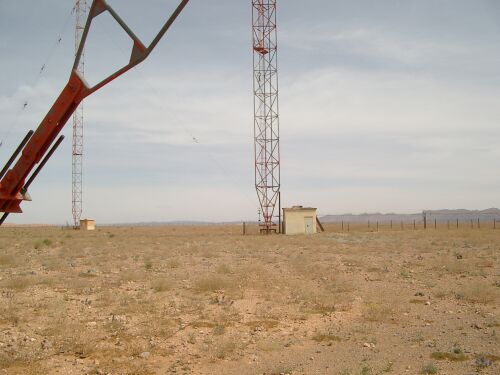 |
Central mast and Eastern mast (reflector).
You recognize the grounded tube at the base of the center mast. This tube (insulated) inside of the mast represents a coaxial line with the mast as outer conductor. The tube is electrically connected to the mast at a certain height of the mast. This design transforms a reactance to the base of the antenna.
|
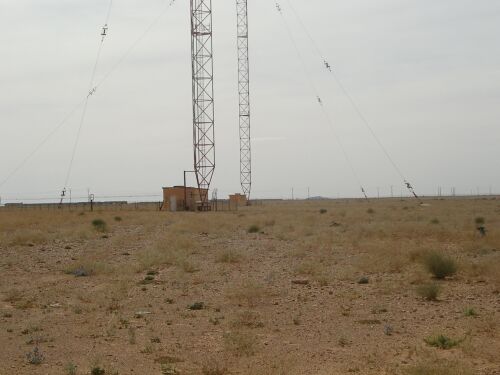 |
Central mast and Western mast
(director).
You recognize the grounded tube at the base of the center mast, part of the stub line as described above.
|
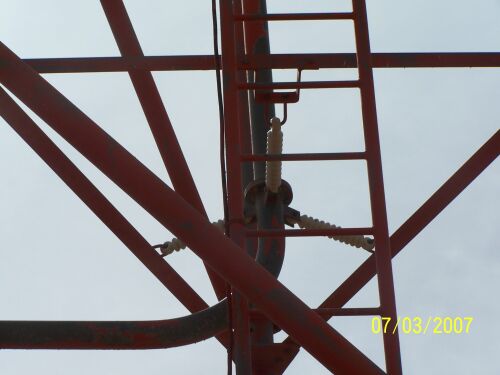 |
Details of the stub line at the base of the centre mast.
|
 |
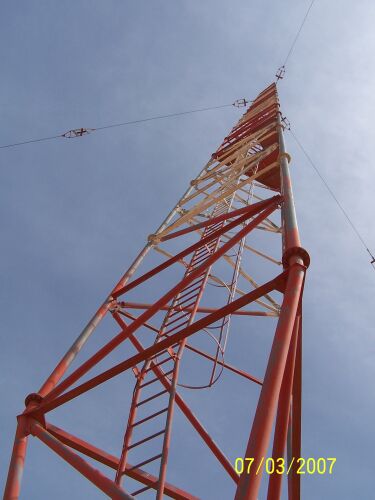 |
Details of the mast
|
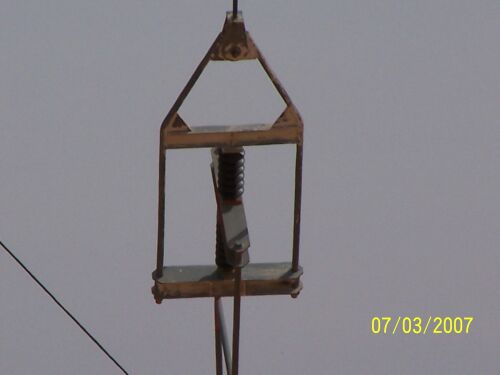 |
Guy insulator
(fail safe)
|
|||||||||
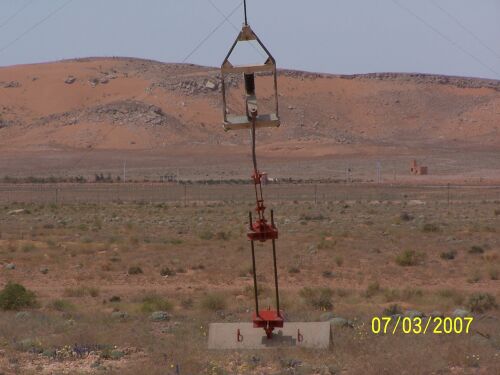 |
Guy insulator
(fail safe)
|
|||||||||
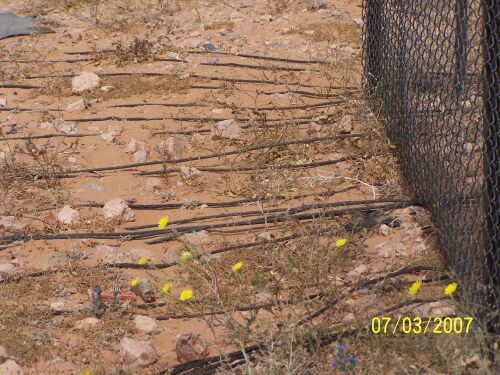 |
Ground screen
Every mast has its own ground screen. Each screen consists of 120 radials with wires of 3 mm diameter.
TDA (Télédiffusion d'Algérie) provided an additional ground screen consisting of 90 radials with 8 mm diameter.
|
|||||||||
It is common to lay the ground screen on the ground instead of digging it into the ground when the terrain is difficult .
|
||||||||||
In Bechar the question was raised, how high is the difference of losses when providing 90 radials instead of 120 radials. See below the rough calculation:
in case of a transmitting power of 400 kW and 120 radials the losses in the ground screen are given by 4,49 kW. When reducing the radials from 120 to 90 the losses are increased from 4,49 kW to 5,91 kW.
The results are given in the following table:
It is obvious that the difference of losses is litttle comparing 90 and 120 radials.
|
 |
 |